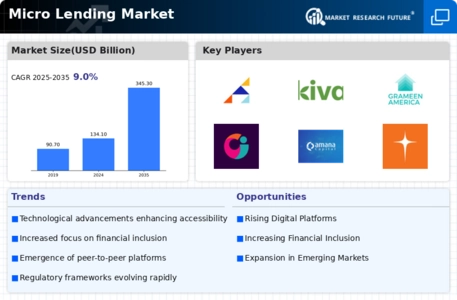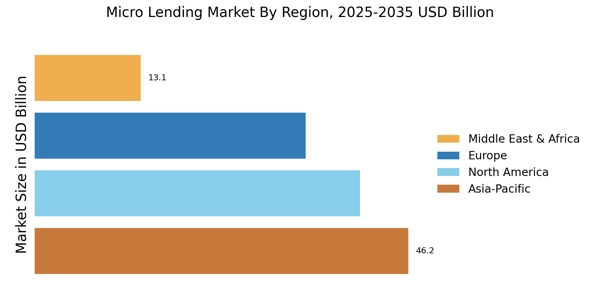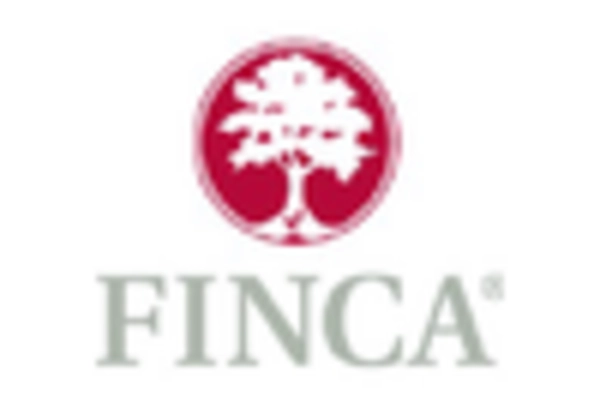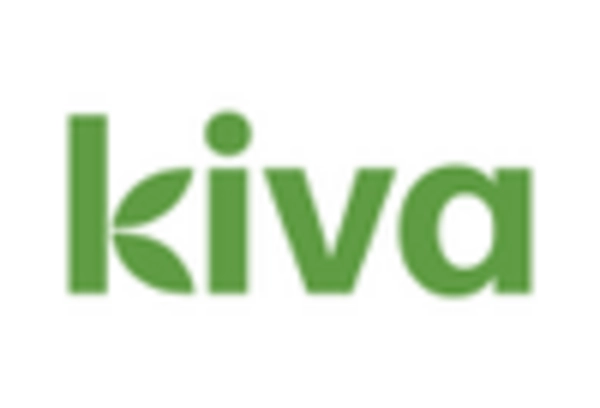Technological Advancements
Technological advancements are playing a pivotal role in shaping the Micro Lending Market. The proliferation of mobile technology and digital platforms has enabled micro lenders to reach a broader audience with greater efficiency. For instance, mobile lending applications allow borrowers to apply for loans and receive funds quickly, often within hours. This shift towards digital solutions is reflected in the increasing number of micro lending platforms, which have reportedly grown by over 30% in the last few years. As technology continues to evolve, it is expected that the Micro Lending Market will further innovate, enhancing customer experience and operational efficiency.
Increased Financial Inclusion
The Micro Lending Market is experiencing a notable surge in demand due to the increasing emphasis on financial inclusion. Many underserved populations, particularly in developing regions, are gaining access to financial services that were previously unavailable. According to recent data, approximately 1.7 billion adults remain unbanked, highlighting a significant opportunity for micro lenders to fill this gap. By providing small loans to individuals and small businesses, the Micro Lending Market is not only facilitating economic empowerment but also contributing to poverty alleviation. This trend is likely to continue as more organizations recognize the potential of micro lending to foster entrepreneurship and stimulate local economies.
Rising Awareness of Social Impact
There is a rising awareness of social impact investing, which is significantly influencing the Micro Lending Market. Investors are increasingly seeking opportunities that not only provide financial returns but also contribute positively to society. Micro lending aligns well with this trend, as it empowers individuals and communities by providing access to capital. Recent surveys indicate that a substantial percentage of investors are willing to allocate funds to socially responsible ventures, including micro lending platforms. This growing interest in social impact is likely to propel the Micro Lending Market, attracting more funding and resources to support its expansion.
Supportive Regulatory Environment
A supportive regulatory environment is emerging as a key driver for the Micro Lending Market. Governments and regulatory bodies are increasingly recognizing the importance of micro lending in promoting financial inclusion and economic development. Initiatives aimed at creating favorable conditions for micro lenders, such as simplified licensing processes and consumer protection regulations, are being implemented. This regulatory support is likely to enhance the credibility and sustainability of the Micro Lending Market, encouraging more investors and institutions to participate in this sector. As regulations evolve, they may further facilitate the growth of micro lending initiatives.
Growing Demand for Small Business Financing
The Micro Lending Market is witnessing a growing demand for small business financing, particularly among entrepreneurs in emerging markets. Small businesses often struggle to secure traditional bank loans due to stringent requirements, creating a substantial market for micro lenders. Recent statistics indicate that micro enterprises account for over 90% of all businesses in many regions, underscoring the critical need for accessible financing options. This trend is likely to drive the Micro Lending Market forward, as more individuals seek to establish or expand their businesses with the help of micro loans.


















Leave a Comment